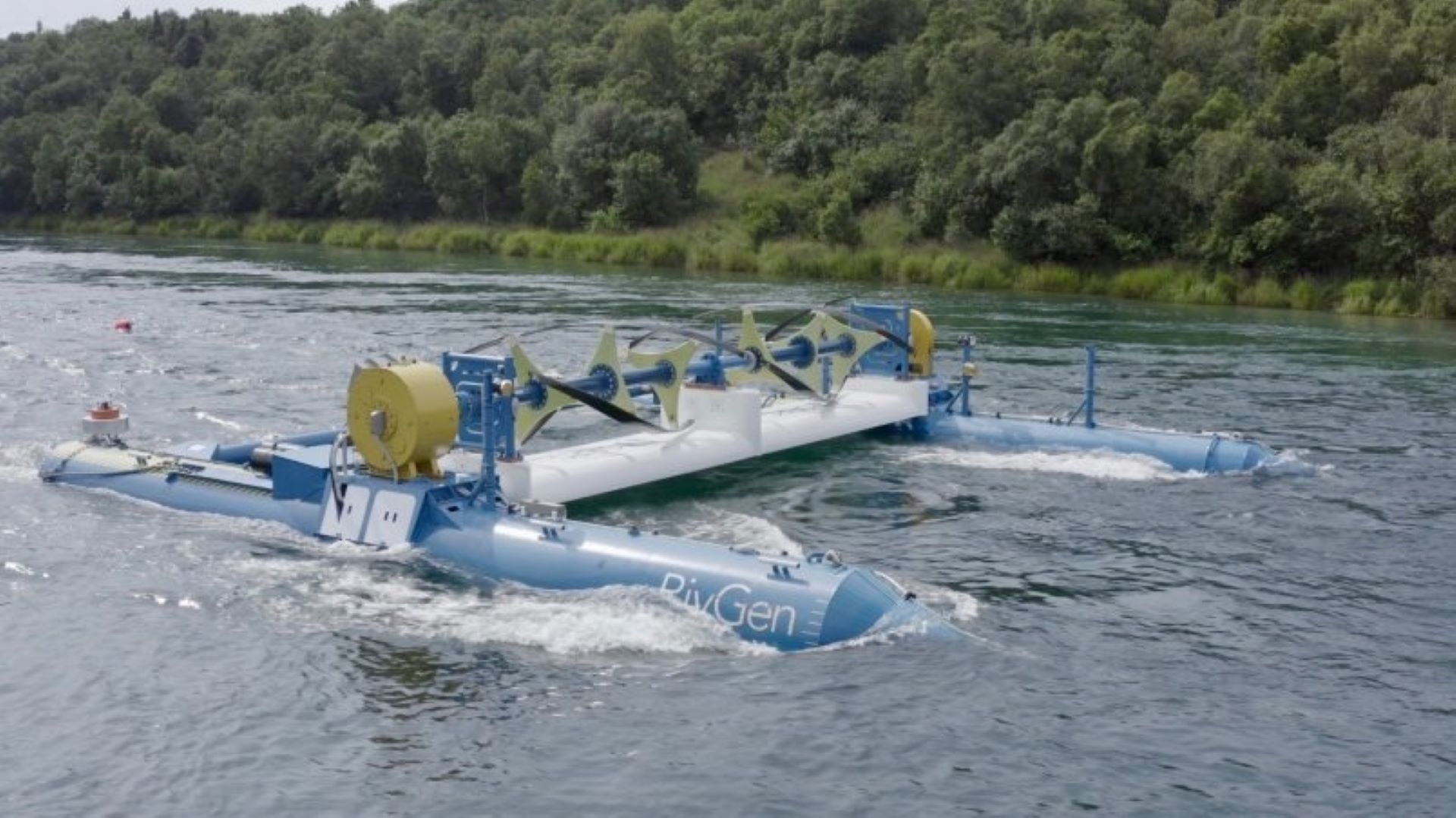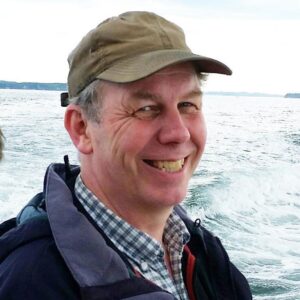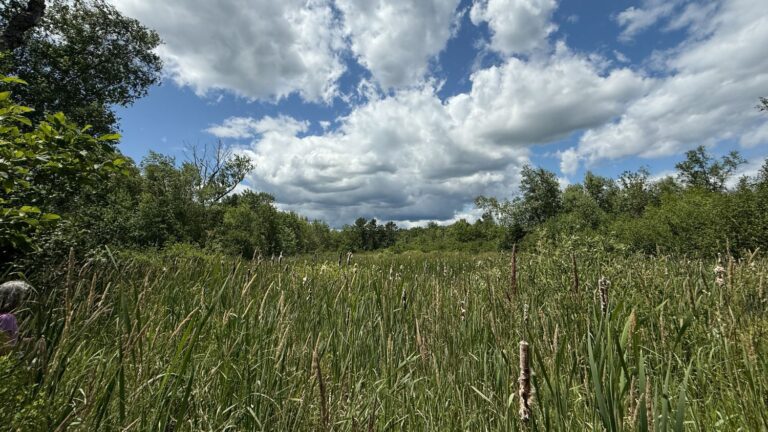After being dormant in its tidal power operations in the Cobscook Bay area for a decade, Ocean Renewable Power Company (ORPC) is gearing up to again begin testing commercially viable turbine generator units off Eastport this year.
Stuart Davies, who has been ORPC’s CEO since 2020 after Chris Sauer retired, was in the city to explain the company’s plans on March 14. Beginning in early May, ORPC will deploy for a month an Advanced TidGen device with a single turbine at its site in Cobscook Bay, using the existing bottom support frame, and then at the end of this year or the beginning of next year will deploy it again for a 12-month period.
The next phase, which is anticipated to begin in 2025, will be to move operations to the Western Passage site near Dog Island, Eastport, where ORPC has already conducted studies of bottom conditions and currents and where a full-scale system with four turbines will be installed.
ORPC has a preliminary permit from the Federal Energy Regulatory Commission (FERC) to investigate the Western Passage project site and will need a license for a permanent site. ORPC’s license from FERC for its Cobscook Bay site ended in 2021, so the company had to remove its power cable that previously ran to the shore.
For its upcoming operations there, ORPC will use a small surface barge with a load bank that will turn the electricity into heat, which will be dissipated. At their peak during the tidal cycle, the turbines will generate between 100 and 120 kilowatts of power. The company does have a U.S. Army Corps of Engineers permit to operate at the Cobscook Bay site.
ORPC also has a power purchase agreement for up to 5 megawatts of electricity with Versant Power. The Western Passage site will be used to develop a one- to two-megawatt system called the Optimor, which is larger than ORPC’s TidGen system that had been tested in Cobscook Bay in 2012. ORPC is testing its tidal turbine foil concepts in a tank in Rome, Italy.
While ORPC had hoped to begin its Western Passage project this year, the COVID pandemic delayed the process, Davies explained. Another challenge has been to develop the anchoring technology for the tidal turbines, which is still being explored.
“We had a lot of momentum in 2013 and 2014, then we went a little quiet,” Davies noted. For the past decade, the company has been working with remote communities to get them off diesel generators and been refining its technology to generate electricity from river currents instead of tidal currents.
“In 2023, the focus will be back to the ocean both here and at Cook Inlet” in Alaska, said Davies.
The tidal generator system will use the same core technology as ORPC’s RivGen Power System, with the same turbine and generator design, while the anchoring will be different. With the tidal generators, there will be a ballast tank on top, and the turbines will be lowered to a targeted depth, which can be adjusted if necessary. Davies notes that the mid-water column still has “robust” currents. “We’re really excited about the next few years and 2023,” he said.
ORPC also is working with the City of Eastport on its model smart microgrid project that would use a mix of tidal and solar power, with a battery storage system, to meet energy needs in the city. Funding would be through the U.S. Department of Energy’s Energy Transitions Initiative Partnership Project (ETIPP) program.
As for funding for ORPC’s projects, the Department of Energy awarded the company $5.3 million for its Advanced TidGen system, with ORPC to provide a $6.25 million match. In 2021, Canadian Shield Capital conducted a private capital raise of $25 million for the company, and ORPC will be looking to obtain federal grant funding through the Inflation Reduction Act and the Bipartisan Infrastructure Law for the Western Passage project.
The company’s other projects have included a deployment on the Winnipeg River in Canada for a First Nations community, installation of two RivGen systems at Igiugig in Alaska and collaboration with Schneider Electric for a battery system and smart microgrid controller to provide communities with highly predictable baseload electricity in renewable energy form.
ORPC also hopes to install its first system in Chile this year, is deploying two RivGen devices on a river in Millinocket and is working with Shell Oil to deploy a RivGen system on the Mississippi River for one of its facilities.
ORPC, which is headquartered in Portland, has signed a partnership to take its technology to remote communities around the world, but Susy Kist, director of communications for the company, noted, “Maine really is our home and our center.”
The bulk of ORPC’s engineering is being done in the state, along with the manufacturing and testing of devices, including at its Eastport site. “This is our proving ground here.” The company had $1 million in contracts in Maine last year and has 38 employees, with 29 in Maine.
Davies noted that, with the bottom support frame setup in Cobscook Bay, not only ORPC but also other companies can test their tidal power devices at the site. “It’s a great proving ground for companies to test their technology here.”
This story from the Quoddy Tides was republished with permission.
Sign up here to receive The Maine Monitor’s free newsletter, Downeast Monitor, that focuses on Washington County news. Suggest other stories in Washington County by email: gro.r1752607598otino1752607598menia1752607598meht@1752607598tcatn1752607598oc1752607598.







